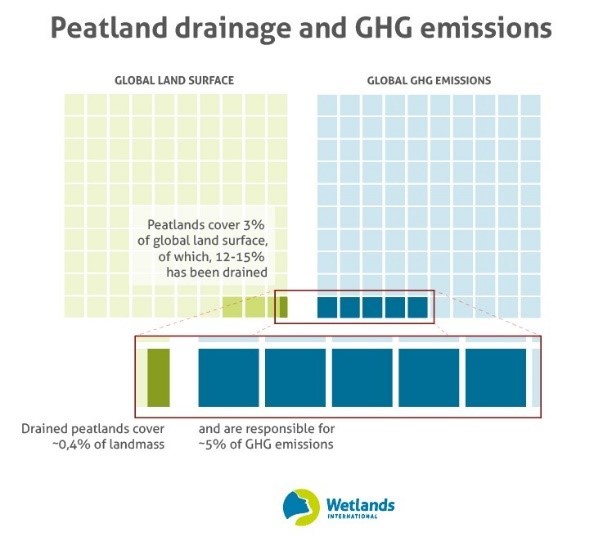
The Peatland Breakthrough
The importance of peatlands
Peatlands hold unparalleled significance in combating climate change and achieving the goals of the Paris Agreement. Storing up to one-third of the world’s soil carbon—double the carbon found in the world’s forest biomass—they are the most carbon dense terrestrial ecosystem. Beyond their climate mitigation benefits, peatlands enhance community and ecosystem resilience by regulating water flows, minimizing flood and drought risks, and enhancing water quality. They provide critical habitats for diverse flora and fauna, including endangered species like orangutans, and support livelihoods through the provision of food and fiber.
Peatlands threatened
Peatlands worldwide are at risk. While they represent 3% of global landcover, between 12% to 15% of peatlands have been drained, primarily for agriculture and forestry. This degradation – representing only 0.4 per cent of land surface – has turned peatlands from carbon sinks into major sources of greenhouse gas emissions, contributing to around 5% of all global GHG emissions —more than the aviation and shipping sectors combined.

Towards a Peatland Breakthrough
To meet the Paris Agreement’s mitigation and adaptation goals we need a system change of land-use that halts peatland drainage, restores degraded areas, conserves remaining peatland carbon sinks, whilst enabling peatland positive community land-use.
The Peatland Breakthrough is an initiative underway by several partners that aspires to deliver these systems-level changes by rallying public and private stakeholders around shared goals to deliver a large-scale land-use change that safeguards and restores peatlands worldwide. It will elevate peatlands on the global agenda and enable on-the-ground action, including through more sustainable practices like paludiculture.
The Peatland Breakthrough represents a critical step toward realizing the Paris Agreement goals and safeguarding ecosystems that are vital for climate, biodiversity, and communities. By uniting efforts globally, this initiative has the potential to transform peatlands from a climate liability into nature’s champions in achieving a resilient, net-zero carbon world.
Organizing partners
This effort is currently being led by organizations with a strong track record of working on peatlands including Global Environmental Centre, Greifswald Mire Centre, Michael Succow Foundation, Food and Agriculture Organization of the UN, UN Environment Programme/Global Peatlands Initiative, Convention on Wetlands, and Wetlands International.
We also acknowledge the vital role of involving key private sector representatives, land users, farmer organizations, philanthropic organizations, regional development banks, governments, and other stakeholders. Their dedication and contributions have been crucial for driving meaningful progress and collaboratively setting ambitious goals.
